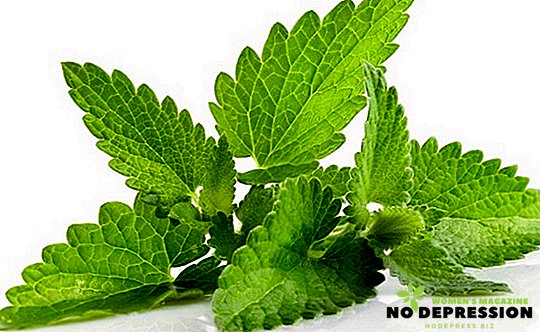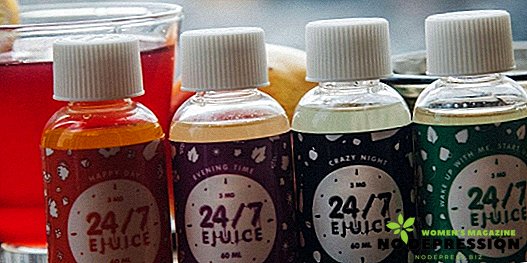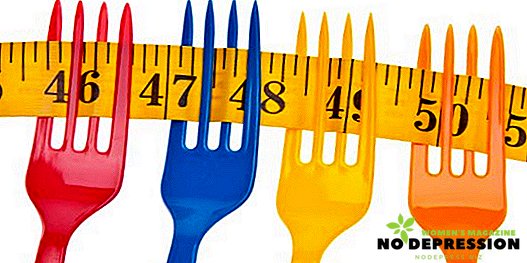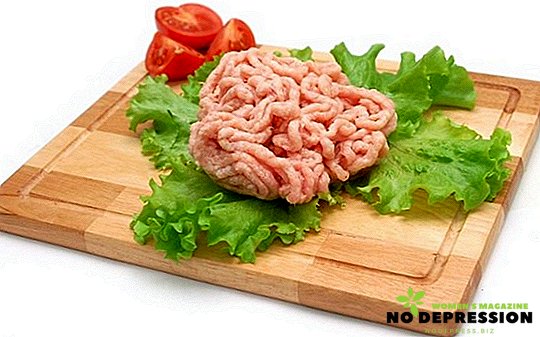Peppermint is considered one of the most popular plants used in pharmacology and phytotherapy. To preserve the healing properties, it is important that the plant is fresh and contains a maximum of essential oils. In cooking and perfumery, mint is used as a flavoring agent, and in medicine - as a sedative, bactericidal, astringent and painkiller.

Morphological description
Peppermint is a perennial cultivated herb that has a strong odor. In the wild, such a culture does not occur and is most often grown on household plots. Peppermint has an upright stem and a branchy creeping rhizome. The large leaves of the plant are colored dark green, but on the inside they are more pale. The upper part of them is smoother, and the lower part is slightly pubescent. The leaves have an oval shape up to 8 cm long.
When flowering at the top of the plant, small flowers are formed, painted in a light purple color. Peppermint blooms in late-early September, after which fruits are formed on it in the form of dry brownish nuts. In fact, the fruits are formed quite rarely, because the plant is a hybrid of water and garden mint. It is possible to plant culture on a personal plot with roots or layers.
The chemical composition of peppermint
Peppermint is considered a unique plant that has a rich chemical composition. Essential oils of menthol are of particular value.
 Peppermint contains:
Peppermint contains:
- glucose;
- organic acids;
- tannins;
- aldehydes;
- organic compounds;
- carbohydrates of the terpene group;
- steroid alcohols;
- vitamins of group B and PP;
- steroid alcohols;
- Antioxidants of group A and C.
Nutrients are found in the leaves of the plant as well as in flowers, seeds and stems.
What makes peppermint different from normal?
Peppermint is known to many traditional healers, has a strong smell and powerful medicinal properties. Mint is a genus of plants that have a similar composition and appearance.
Ordinary mint is also called fragrant, it is an independent species and has a bright smell. Peppermint is considered a hybrid of garden and water culture, and its main difference is a dense, thick stem. All species differ in their properties, but peppermint is considered the most valuable.
Medicinal properties
Peppermint is especially popular in folk and traditional medicine. Its leaves are used both in dry and in fresh form for the preparation of various medicines. Mint contains a large amount of essential oils, tannins, menthol and aromatic acids. Drinks with mint help to improve blood flow in the body, increase the mobility of the intestinal walls and have a positive effect on the intestinal mucosa.

Using a plant-based extract, it is possible to cope with spasms of the biliary and urinary tract, improve appetite and the functioning of the digestive glands.
Peppermint and products based on it have the following properties:
- soothing;
- painkillers;
- tonic;
- antimicrobial;
- bactericidal;
- diuretic;
- choleretic;
- anti-inflammatory.
In addition, with peppermint, it is possible to slow down the aging process of the body, improve digestion and restore the metabolism in the body. Funds based on this plant help to cope with nausea during pregnancy and with various pathologies of the digestive system.
Harvesting and storage of raw materials
For the preparation of medicines used leaves of the plant, which are collected in dry weather at the very beginning of its flowering. This is due to the fact that during this period an increased concentration of active substances is observed in the plant.
The mint flowering period lasts from June to September, therefore, plant raw materials can be harvested almost the entire summer. It is recommended to dry the collected plant in a draft under canopies, after which it is folded into cardboard boxes.
It is best to grind the harvested mint immediately prior to the preparation of medicines, which will avoid the loss of essential oil. With proper harvesting and storage, the plant retains its beneficial properties for two years.
Dosage forms of peppermint and their use
Peppermint is a component of pharmaceutical preparations that are available in the form of drops, tablets, ointments, aerosols, and various tinctures.
Mint Leaf Infusion
 For pathologies of the gastrointestinal tract, cardiovascular system and stagnation of bile, it is recommended to take a mint infusion. In addition, this remedy is effective for headaches, insomnia and nausea.
For pathologies of the gastrointestinal tract, cardiovascular system and stagnation of bile, it is recommended to take a mint infusion. In addition, this remedy is effective for headaches, insomnia and nausea.
To prepare it you need:
- In a bowl pour a teaspoon of dried leaves of the plant and pour them with a glass of boiling water.
- Leave the resulting mixture for 15-20 minutes, then strain and drink in the form of heat.
To improve the taste of the prepared product is allowed to add a little sugar or honey.
Mint decoction
Peppermint decoction is recommended for women who suffer from premenstrual syndrome. In addition, it is effective for too heavy and painful menstruation, hypertension, pathologies of the cardiovascular system and headaches.
For the preparation of mint broth, you need a tablespoon of vegetable raw materials pour 500 ml of boiling water. Put the resulting mass on a small fire and simmer for 10-15 minutes. After the tool must be removed from the stove and leave for another 10-20 minutes. Cooked decoction of peppermint must be drained and drunk several times a day and 1/2 cup before meals.
Tea with mint

Tea with mint has a slight sedative effect. Its reception allows you to calm the nervous system, cope with increased stress and relax. With daily use of such a drink, a person becomes confident and calm, which makes his communication with people more productive.
Mint tea is best to drink fresh, which will preserve its valuable properties and get the most pronounced effect. To prepare it, throw a few sprigs of fresh or dried plant into the teapot and pour a glass of boiling water over it.
Peppermint Oil
 Peppermint oil is produced in the form of an alcohol solution. The tool is intended for external use, but for pathologies of the gallbladder and liver, its internal use is indicated.
Peppermint oil is produced in the form of an alcohol solution. The tool is intended for external use, but for pathologies of the gallbladder and liver, its internal use is indicated.
Peppermint oil is used for rubbing into the temporal region of the head with constant migraines and as aromatherapy during inhalations during a cold. In addition, with the help of such a tool, it is possible to cope with pain and itching in various skin pathologies by rubbing it into the affected areas of the body.
Mint drops
At the pharmacy, you can purchase a drug such as mint drops. They are designed for internal use and help to cope with nausea. In addition, thanks to them they manage to stop the urge to vomit.
Use for women during pregnancy and lactation
Many gynecologists advise to drink peppermint tea during pregnancy. With its help, it is possible to relieve nervous tension and thereby calm the child. It is best to use such a drink before going to bed, which will help you sleep well and recuperate.
During the period of breastfeeding from the mint-based decoction is best to give up. The fact is that the plant has a pronounced taste, and this can affect breast milk. It can become bitter, and the child will refuse it or will be capricious.
Highly concentrated decoction is recommended to use to complete breastfeeding. The plant contains substances that have a mild effect on the female body and reduce the amount of milk produced.
Pharmaceuticals

The pharmacological industry produces the following medicines with the addition of peppermint:
- Mint tablets. They have a calming and tonic effect, help to improve the overall condition of the body.
- Pectusin tablets. Appointed for the treatment of diseases of the nose, throat and bronchi.
- Ointment Menovazin. It has a pronounced analgesic effect in case of itching of the skin, pain in the muscles and neuralgia.
- Ointment Bromenthol. With the help of tools it is possible to destroy pathogenic microorganisms in wounds, and to cope with pain syndrome.
- Drops Evkatol. This drug is intended for rinsing with pathologies of the nasopharynx.
In pharmacies, you can buy such products based on peppermint, as Olimethine capsules, Camfomen aerosol and Validol drops.
Contraindications to mint
Despite the mass of beneficial properties of peppermint, in some cases it is best to refuse treatment with it. Contraindication to the use of the plant is the period of breastfeeding, because the plant reduces the quality of milk.
It is best for patients with low blood pressure to refuse plant-based products, and if mint is consumed excessively, problems with sleep may occur.
Peppermint reduces the tone of blood vessels, which can lead to varicose veins. During inhalations, a strong concentration of the plant can cause worsening of breathing and pain in the region of the heart. It is not recommended to give peppermint to children who have not yet reached the age of 3 years. It should be remembered that the funds on the basis of such a plant can reduce libido in men.












